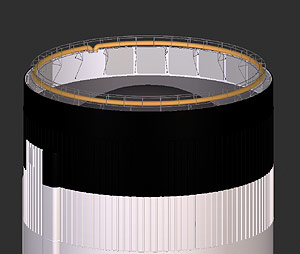ANDREA wrote:...But sincerely at this point I have not clear what exactly you are actually missing.
Could you be more detailed, please?
Tks...
Ok; I think that at his point we have a good idea of the structure, the several elements etc.
Now, the main problem in 3D, is that you are facing... 3D! You must analyze several docs to determinate the right proportion of things, but most important if you want your model accurate, their function. For this the best are of course blue prints...
Let's take the example of this last 360?° SLA. Ok, we have here the placement and an approximate idea of the shape of all elements. Now, to open the SLA, I need to know how was done the LM attach Fairing for example, but this doc is not useful for this. In this case I must dig in many pdf or real shots to reconstruct the puzzle...
In the absolute for a good model, we need general shots (to determinate general shape and placements of details), and close up shots of ALL those details. If we can find blue prints, better, but in reality, if we had enough shots (during assembly for example) it would be enough.
The main problem is that in general we can find quickly one or two details, but regrouping ALL the necessary information is a real challenge... (It's why the team job is preferred here).














